Although great horned owls are year-round residents of Massachusetts, December through February is a particularly good time to go “owling” for this iconic species.
The earliest owl to begin mating season, great horned owls often “duet” in courting pairs, a hauntingly beautiful, stuttering “hoo-hoo-HOO-hoo-hoo” sound. And while males are typically smaller than females, they have larger voice boxes, so you can identify the male voice in a duet by its distinctively lower pitch.
On our website, you listen to a great horned owl call and even report a sighting. Below, enjoy these five photos of great horned owls from past years of our Picture This: Your Great Outdoors photo contest.
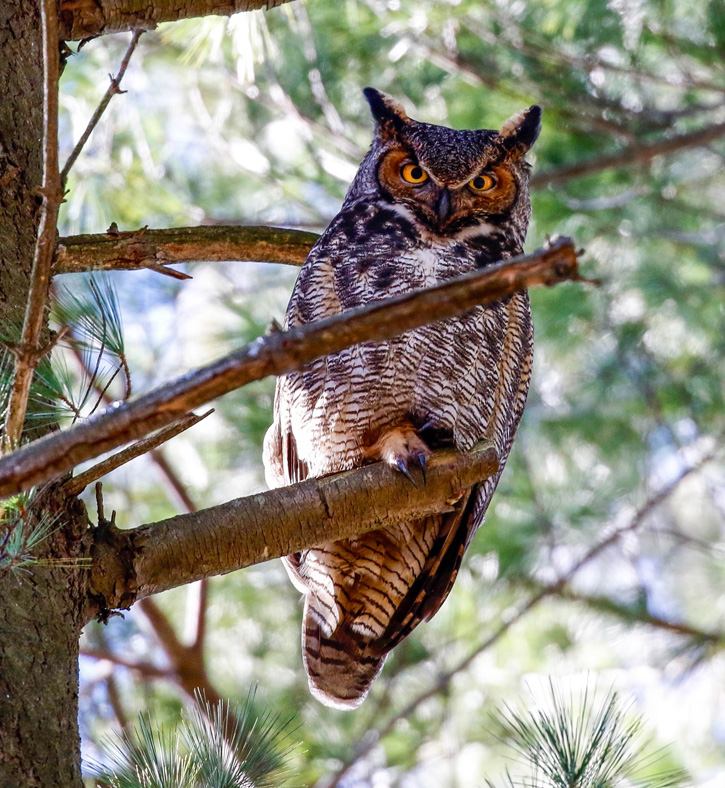
Great horned owl © Katherine Sayn-Wittgenstein
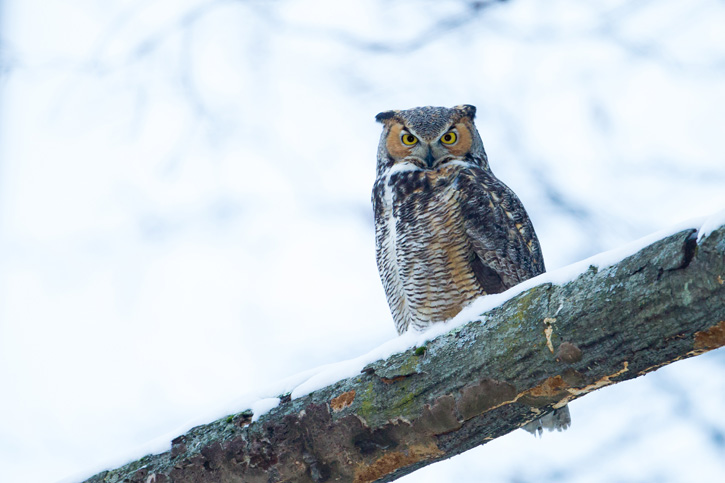
Great horned owl © Phil Sorrentino
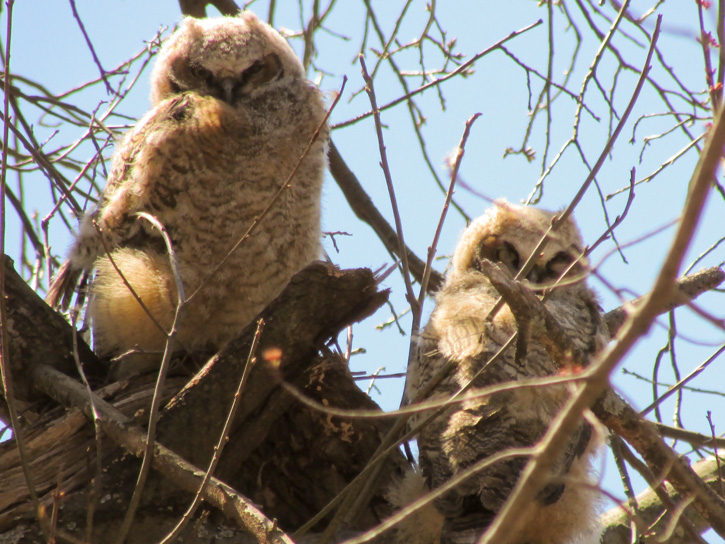
Juvenile Great Horned Owls © Maureen Fregeau
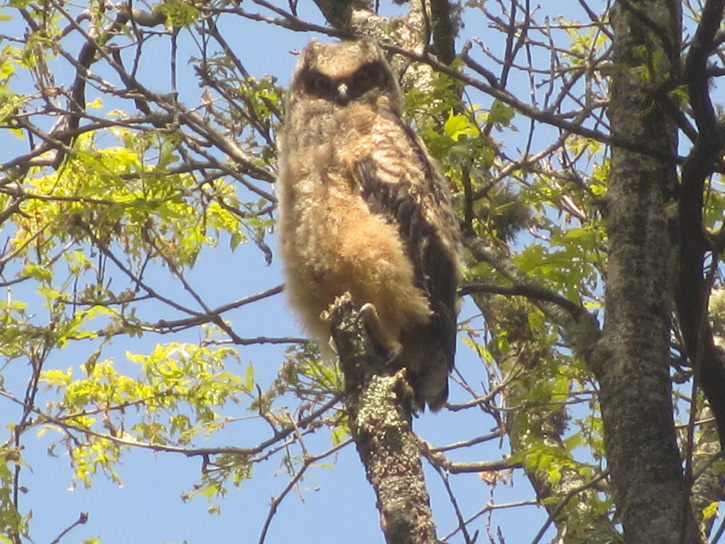
Juvenile Great Horned Owl © Libby Johnson
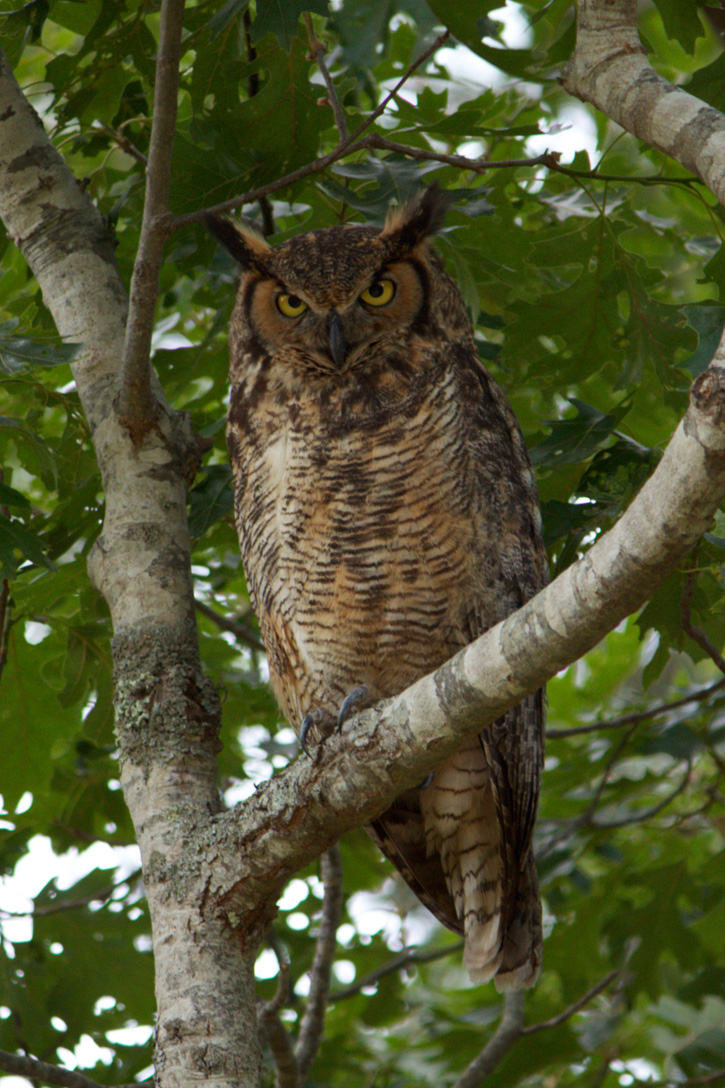
Great Horned Owl © Emily Swartz
CORRECTION: This blog post originally featured a photo that was misidentified as a Great Horned Owl but is actually a Eurasian Eagle-Owl (Bubo bubo). Thank you to all the careful readers who pointed out our mistake!


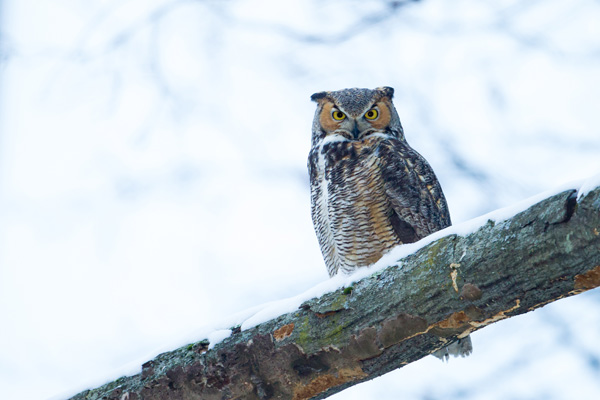
I believe that the third photograph credited to George McLean actually features a Eurasian Eagle-Owl (Bubo bubo),
not our local Great Horned Owl (Bubo virginianus)! I suspect that this bird is the same individual that Mark and
Marcia Wilson regularly use in their live owl program offered around the commonwealth.
You’re right! It looks as if we were too quick in identifying this Eurasian Eagle-Owl (which does not occur in North America) as a Great Horned Owl. Many thanks for your sharp eyes. We have updated the blog post accordingly.